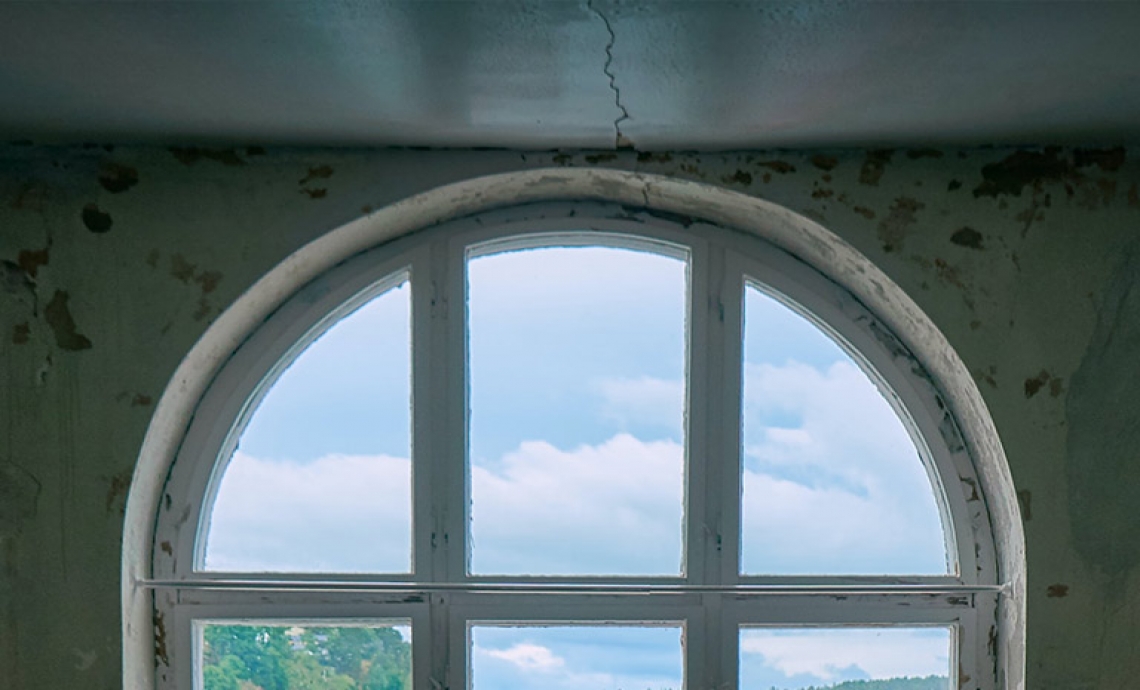
Cracks in plaster ceilings can be cosmetic or indicate serious issues. Learn how to identify and address various types of ceiling cracks effectively.
Cracks in plaster ceilings can be cosmetic or indicate serious issues. Learn how to identify and address various types of ceiling cracks effectively.
Cracks in the ceiling are a normal occurrence and are often more of a cosmetic issue than a structural issue. However, some cracks in the ceiling might need immediate professional attention. If you need a professional to repair ceiling cracks, search no further than our London decorators, who can also fill cracks in walls and repair plaster walls.
The seriousness of a ceiling crack will depend on the location, size, and type. To give you a better idea (or some peace of mind!), we ranked different types of ceiling cracks from least to most serious:
Hairline cracks are thin cosmetic cracks caused by temperature or humidity fluctuations. These fluctuations can result in plaster shrinkage or swelling, creating small fissures. Hairline cracks are simply an eyesore and can be easily fixed with a new coat of paint.
Small cracks might also appear on walls and ceilings due to layers of old paint. When a ceiling or wall has had multiple layers of paint, cracking might appear. If you want to repair hairline cracks caused by old paint, be sure to remove the old paint before applying a new coat.
Straight cracks often follow the edge of the drywall tape along the joint. These are most commonly the result of poor workmanship during drywall tape application when an insufficient amount of plaster is used, making the drywall tape unable to properly adhere to the joints.
Discoloured cracks, such as yellow cracks and brown cracks, are a sign of water damage. Even though these are not linked to structural damage, water damage might lead to more serious problems. We recommend contacting a professional plumber in London to determine the source of the water leak and repair it.
Spiderweb cracks have a center point, and the cracks spread out from that center point, much like a spider web would. Small spiderweb cracks are usually not serious and often the result of poor workmanship, but larger spiderweb cracks may be caused by foundation settlement, which might be linked to compromised structural integrity.
Cracks that appear between the ceiling and wall might be caused by truss uplift. Roof trusses tend to move slightly due to temperature or humidity. However, cracks that run along the ceiling and continue down to the wall are a sign of structural damage and should be dealt with in a timely manner.
Large, deep cracks are a serious concern. In case you have large, deep cracks alongside sagging ceilings, this indicates major structural damage that needs to be dealt with immediately as the ceiling may collapse.
Cosmetic ceiling cracks are not typically covered by insurance. It is recommended to double-check your insurance policy to understand what type of ceiling cracks are covered by your home insurance.
Small, thin ceiling cracks can be ignored or dealt with by applying a new coat of paint. However, when ceilings have multiple cracks that are more than just tiny hairline cracks, a professional should be called to diagnose the cause of the cracks and recommend a solution.
Small cracks in plaster ceilings can be easily repaired by applying new plaster and repainting the ceilings. Larger cracks should be dealt with by a professional to ensure there are no structural concerns.
Hairline cracks can be quickly fixed with a fresh coat of paint.
Yes, changes in temperature and humidity can cause cracks to form on walls and ceilings.
Ceiling cracks can be caused by a variety of issues:
If you recently found new ceiling cracks in your property and would like a second pair of eyes to double-check the type of crack and recommend a solution, get in touch with our team. Give us a call on 0800-0-12-12-12 or, alternatively, request a free quote by filling out our online booking form.
< Back to blog listUse the form to request your callback and we'll come back to you straight away.

Put your contact details into the form along with anything you'd like to share with us about the job.

Our office experts will check the details and call you back with prices and availability.

If it sounds good and you like your trade services hassle-free & fully managed then we're ready to book you in!